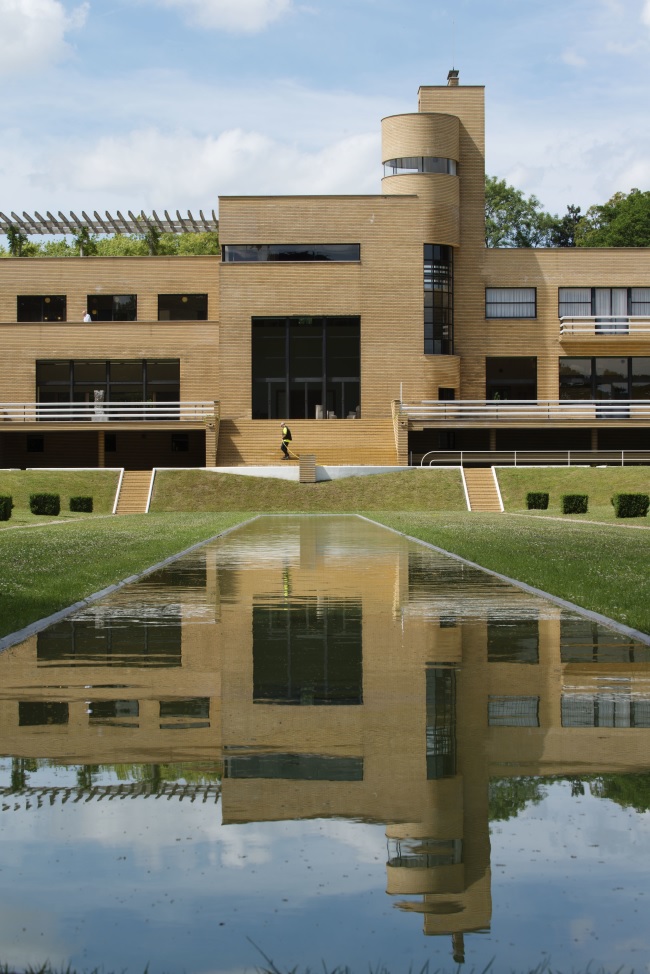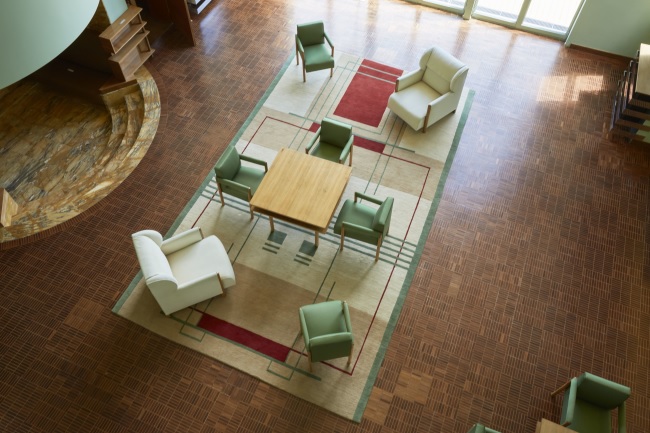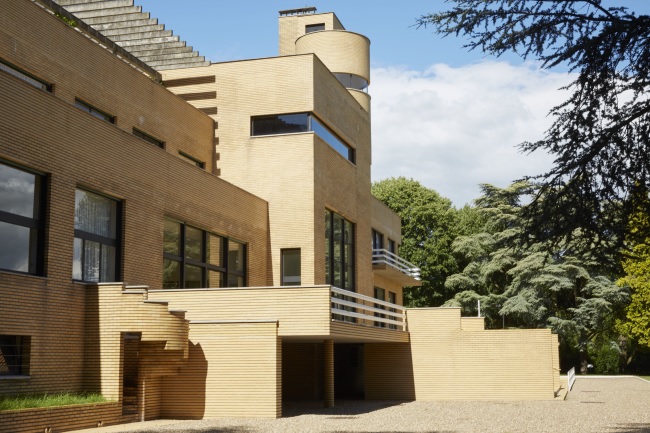French Monument of the Month: Villa Cavrois
Sponsored
In this monthly series, we take a look around France’s many beautiful historical buildings under the care of the Centre des Monuments Nationaux. This month, the imposing modernist Villa Cavrois, located near Lille and Roubaix, in the Nord department.
Nestled in the picturesque countryside of Croix, just a stone’s throw away from the vibrant city of Lille, Villa Cavrois’ striking silhouette stands out among the town’s 20th century neo-regionalist neughbourhoods. This modernist masterpiece was designed by the renowned architect Robert Mallet-Stevens.

The villa seen from the ‘miroir d’eau’ in the garden © Laurent Gueneau / Centre des Monuments Nationaux
A modern castle
Villa Cavrois was commissioned in 1929 by Paul Cavrois, a wealthy textile industrialist, and his wife Lucie. The couple sought to create a modern, luxurious family home, situated away from the factories which Mr Cavrois ran. After talking to the then popular architect Jacques Grébert, the couple turned to Mallet-Stevens, a visionary and somewhat controversial architect. While not necessarily interested in art or design, Paul and Lucie Cavrois did want to live comfortably and in a healthily to provide the best for their seven children. They gave Mallet-Stevens free reign, so long as he stayed within budget.
The villa was completed in 1932 and served as the Cavrois family’s residence for several decades. The property is the most accomplished work of Mallet-Stevens, one that truly represents his thinking. He imagined it as a ‘modern castle ‘ – a vast property of 2,800m² with two symmetrical wings and a number of roof terraces. He also designed the interior spaces, drawing up every single detail. It was equipped with the latest technology of the time too and its own 27m-long pool.
Villa Cavrois is a prime example of the modernist movement that swept through Europe in the early 20th century. The architect’s vision was to create a harmonious blend of art and functionality.
The spacious living areas are flooded with natural light, thanks to the extensive use of large windows and glass walls. The furniture and décor, also designed by Mallet-Stevens, reflect the era’s commitment to clean lines, geometric shapes, and minimalistic elegance while the villa’s open layout encourages fluid movement between rooms.

Tapis de sol restitué par l’entreprise Codimat Collection.
Occupation and restoration
During World War II, the property was seized by the German army and used as barracks. This turbulent history left the villa in a state of disrepair, but its architectural significance could not be denied.
After years of neglect, Villa Cavrois was bought by the state in 2001 and underwent an extensive restoration effort, which culminated in its reopening to the public in 2015. The restoration team meticulously recreated every detail of Mallet-Stevens’ 1932 design, using historical and arecheological research.
A garden oasis and a cultural destination
Beyond the villa’s pristine interiors lies a sprawling garden that further enhances the visitor’s experience. Also designed by Mallet-Stevens, the garden mirrors the modernist principles of the villa itself and its highlight, a rectangular pond known as the ‘miroir d’eau’ prolongs the house’s central hall into the grounds.
Designed to ease the arrival of cars and the drop-off of guests, the circular driveway contributes to the dramatic access to the villa. From the gate, located in the corner of the property, the visitor gradually discovers the monumental facade of the building.
Today, Villa Cavrois serves not only as a historical site but also as a cultural destination. The villa hosts a range of events and exhibitions throughout the year, celebrating the intersection of art, design, and history. Whether you’re a fan of modernist architecture, a history buff, or simply seeking a peaceful retreat from the hustle and bustle of city life, Villa Cavrois offers a unique and enriching experience. Guided tours are available for those who want a deeper understanding of the villa’s history and architectural significance. Tours can be booked in advance or on-site.
60 Avenue John Fitzgerald Kennedy, 59170 Croix
For more information, visit www.villa-cavrois.fr or head to the monument’s Instagram & Facebook.
Lead photo credit : Villa Cavrois © Laurent Gueneau / Centre des Monuments Nationaux
Share to: Facebook Twitter LinkedIn Email
More in architecture, design, Monument Historique, monument of the month, nord, north of France
Leave a reply
Your email address will not be published. Required fields are marked *





